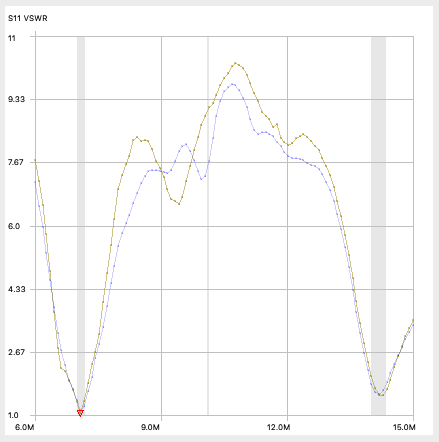I am currently using 2 antennas mounted to a pole on TK brackets at the side of my house.
For 70cm/2m I’m using a Sharman Multicom X30, I could probably do with a higher gain antenna, but this was original purchased for use in the loft so I didn’t want anything too large.
For HF I’ve got a 20m/40m fan dipole built using a Superyagi balun which was given to me by a Warrington ARC club member who was charged with giving it to a new ham for a SK. I experimented with my dipole early 2020 in my loft before mounting it on a winch at the top of my pole down to the gutter, I have Mike G4VSS and Paul G1DVA to thank for getting the TK brackets and antennae installed on the house just before lockdown March 2020.
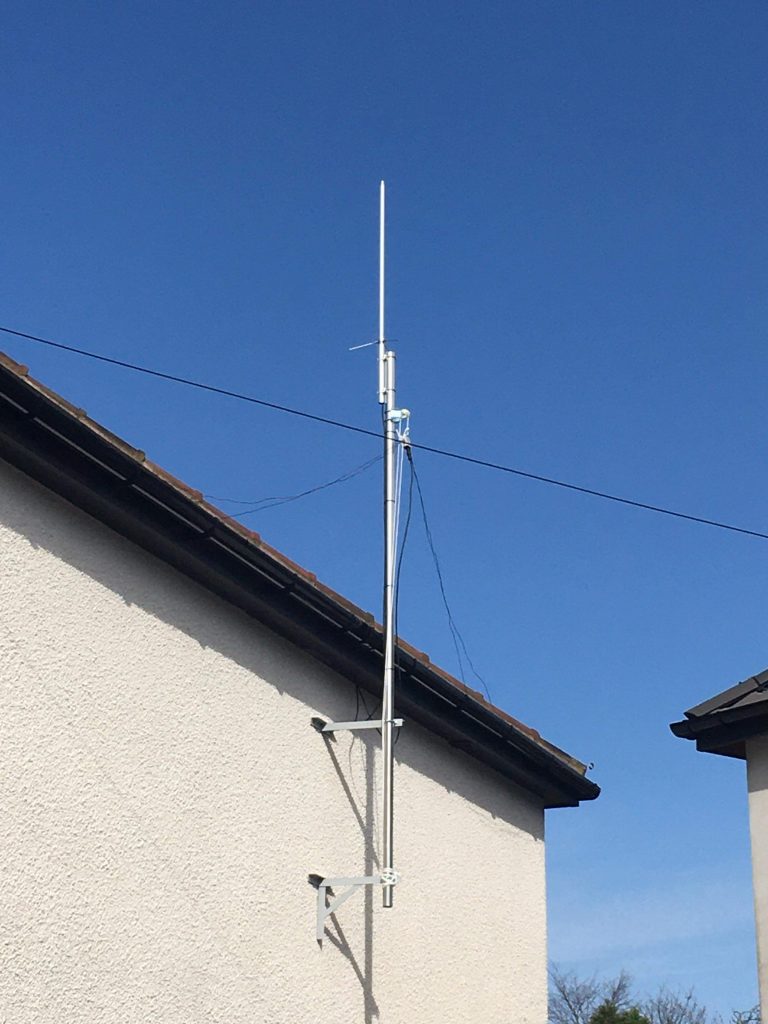
Originally when we put up the dipole we just put the wire down from the balun into the gutter, however it needed some significant adjustment which I did the following day. It actually turned out that the 20m had been chopped a bit short on one side, but with some folding of the 40m and leaving the 20m a bit long on the other side I got acceptable SWR.
I very soon realised that having the wire in the gutter was not ideal as any rain would not only mess up the SWR completely but also move the wire somewhat, so I started using plastic clips to hold the wire up out of the gutter and also to hold the wire in place where it ‘arrives’ in the gutter so the 20m and 40m legs are separate to reduce coupling.

After a couple of months I had some issues with some of the legs of the antenna falling off, I could see what looked like galvanic corrosion, so to try to avoid the legs falling off in future I used some large washers to hold the wires in place and some zip ties for tension relief, I also replaced the 20m legs with slighly longer ones and folded them back after the ‘overchopping’ incident previously.
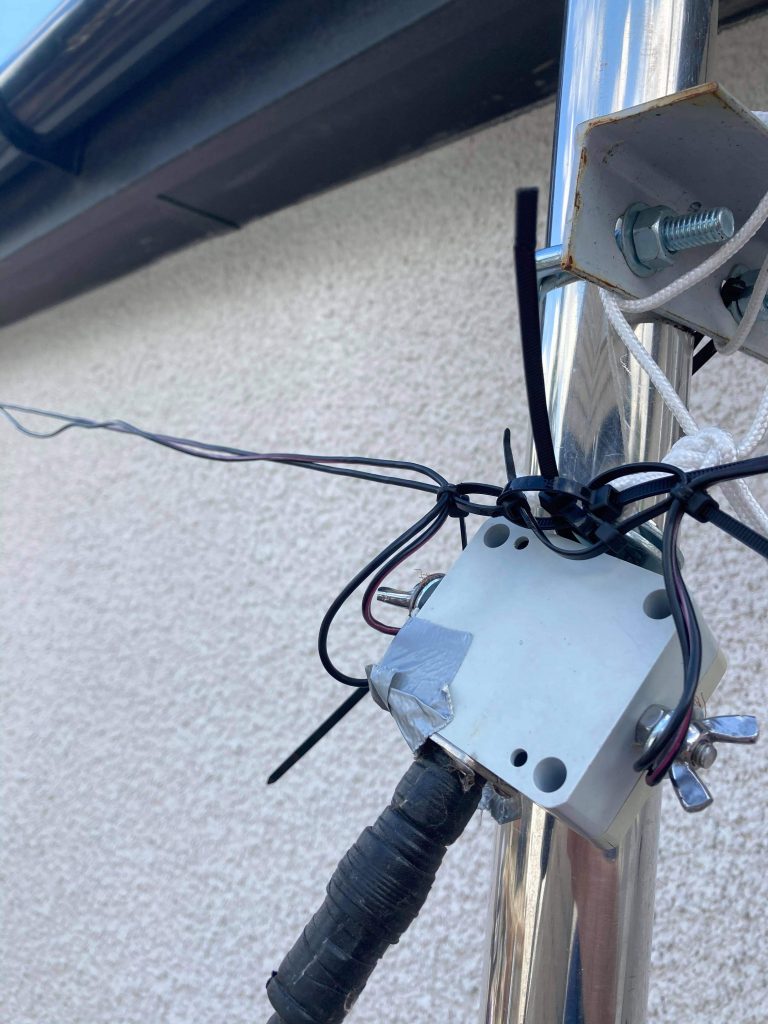
Almost exactly a year after the work to try to make the antenna more resilient I started having odd SWR readings, I first noticed a weird peak at 40m and then shortly after that 40m settled down but the SWR at 20m shot up and the readings on my NanoVNA showed that the 20m dip had moved to the right making it appear as though the antenna was shorter.
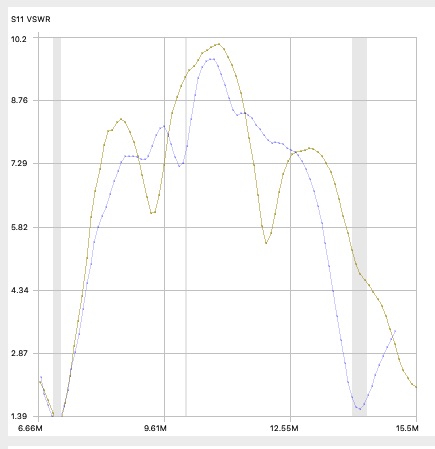
I got up on the ladder, checked the wires and checked for debris etc. in the gutter but found nothing, I then winched down the balun, took a look and winched it back up and the 40m SWR went off completely.

After all this, realising that there were clearly issues, I purchased some lugs and a suitable crimper and a couple of days later gave the antenna a good ‘service’.
When I unscrewed the wingnuts on the balun (which took some serious doing!) it was apparent that the wire had completely disintigrated, galvanic corrosion by the looks of things.
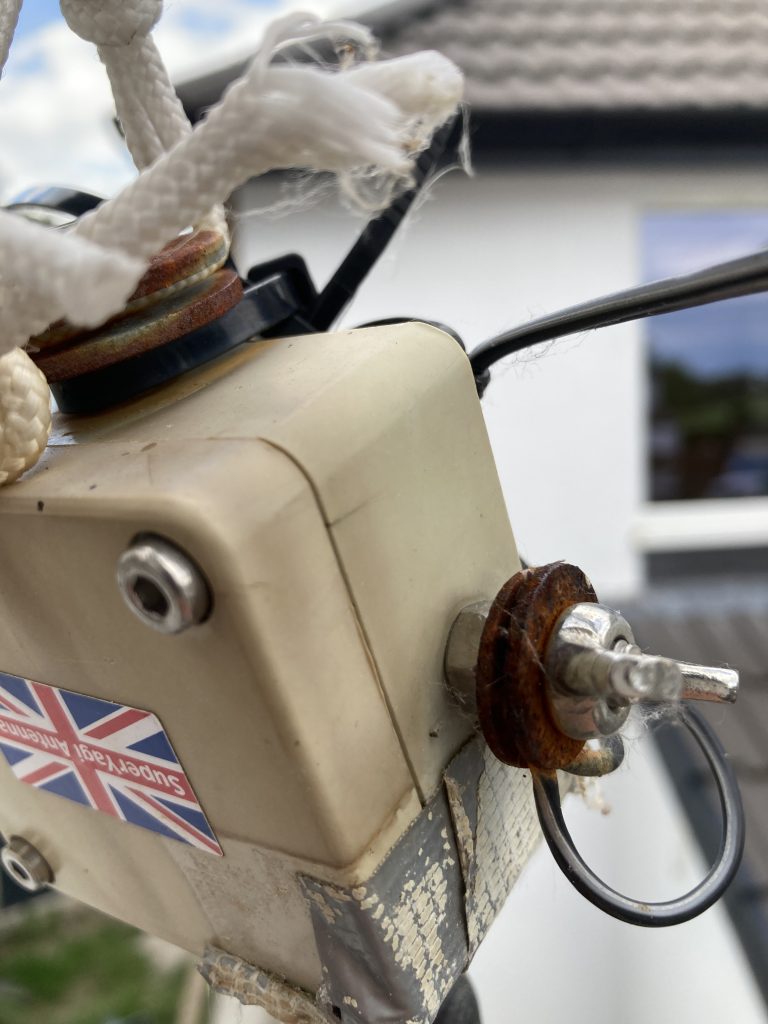
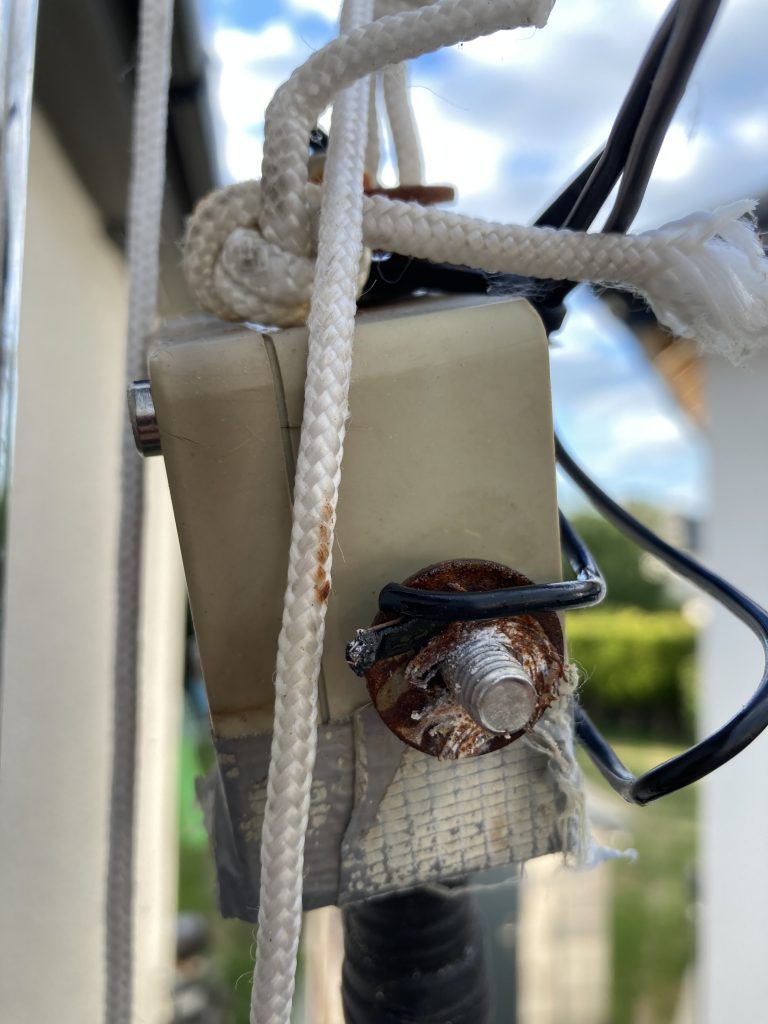
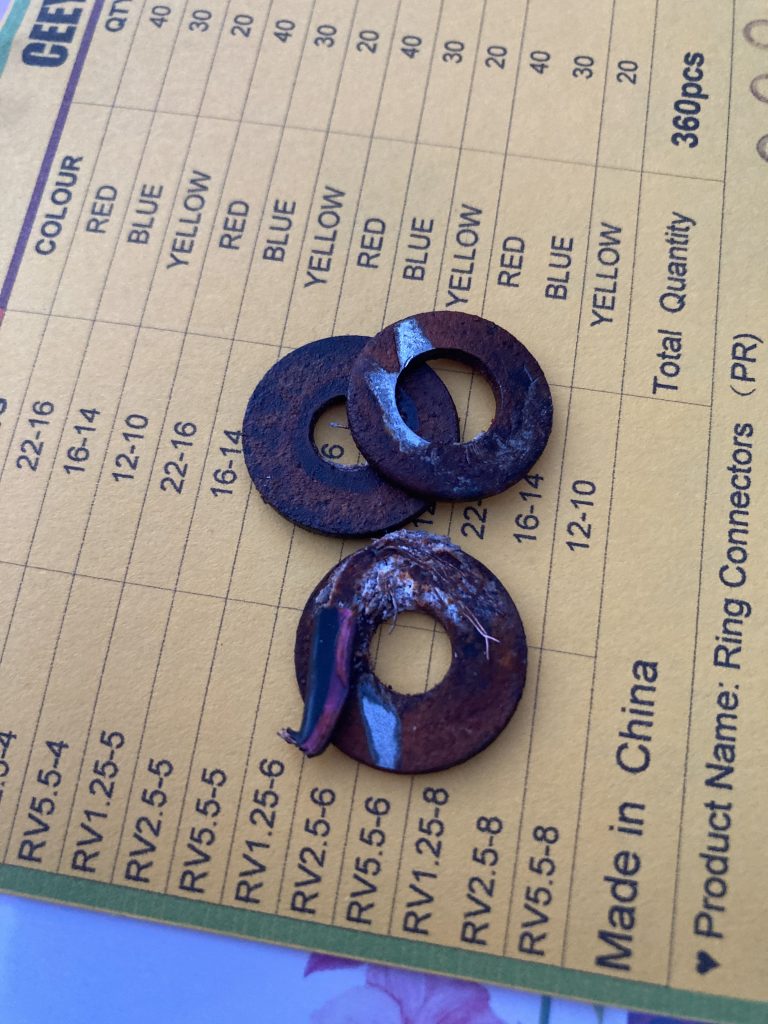
I gave the wingnuts and threading on the balun a good clean to remove the corrosion, installed lugs on the legs of the dipole and reattached, I then winched up the antenna and took a NanoNVA reading and I was back in business. 40m was a little off as I’d messed with the 40m legs trying to get the antenna to work in the interim.
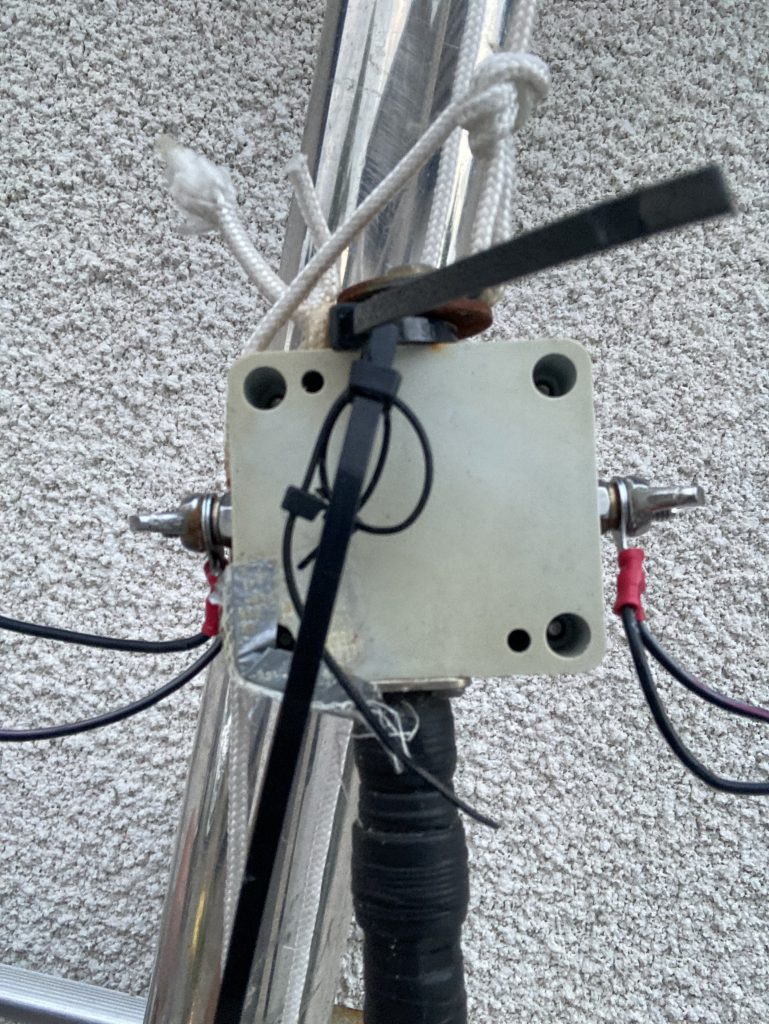
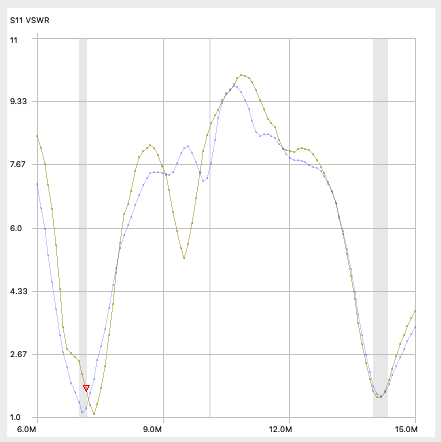
After seeking advice from club members I decided to coat the connections and then pretty much the whole balun in Silkaflex to try to avoid any water getting in, I also took the opportunity to replace the gaffer tape over a crack in the balun with mammoth tape. The result of this was not pretty, but hopefully it’ll do the job. I’m not looking forward to having to strip off the Silkaflex in future!

Once all this was done I made some tweaks to the 40m legs and SWR was back to my previous levels.
